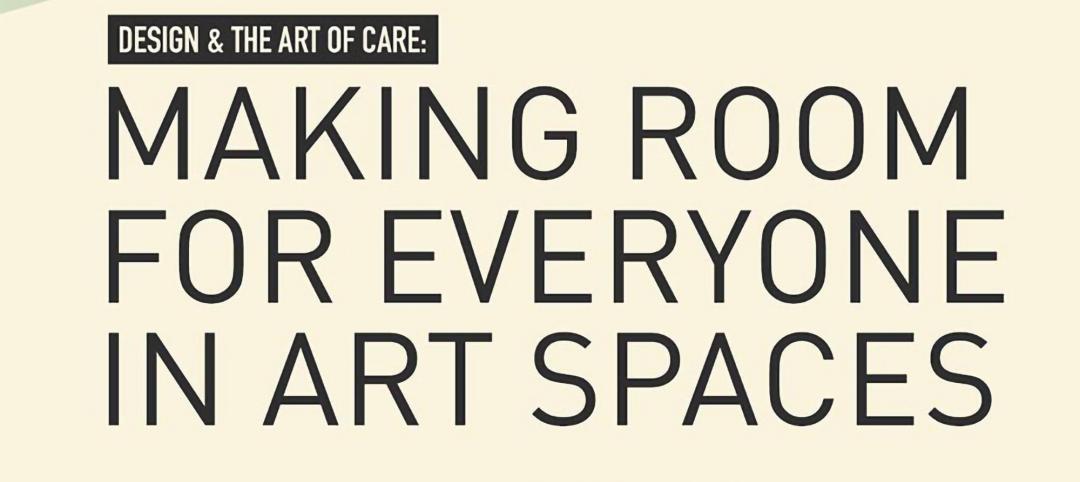If living through a pandemic, a recession, and a heightened public consciousness around social justice have shown us anything, it is what it means to have ‘access.’ From toilet paper, to broadband wi-fi, to navigating systems to scheduling a COVID vaccine, more people are beginning to see the invisible barriers that limit equitable access. Academic libraries and librarians have been reinventing themselves to unlock the secret playbook that holds some students back.
For first-generation college students (FGS), those whose parents did not obtain a degree, the impediments to success can be profound and range broadly.

Graphic credit: firstgen.naspa.org
More and more families, from diverse backgrounds, are sending their first student to college. The Center for First-Generation Student Success, an initiative of the National Association of Student Personnel Administrators and the Suder Foundation, has reported an average of 45% FGS among public and private 4-year institutions. When viewed by institutions who specifically serve minority populations, it is easy to see how each first-generation student comes from unique circumstances.
Each student is unique in what perceptions, experiences, and knowledge they bring as they arrive on campus. Other facets of their life experience can make navigating the traditional college campus system more challenging. The first-generation student generally doesn’t have the same access to resources that make navigating traditional campus systems easier—like guidance from parents or siblings who have been through the experience; deep pockets; or knowing which summer internships and references help build careers.

No student is simply a category. Each brings unique layers of life experience to campus. Graphic: The Diversity Wheel, courtesy of Priya Klocek/Consultant on the Go, adapted from: Lee Gardenswartz and Anita Rowe, Diverse Teams at Work. Burr Ridge, II: Irwin Professional Publishing, 1994. *Internal dimensions and external dimensions are adapted from Marilyn Loden and Judy B. Rosener, Workforce America! Homewood II: Business One Irwin 1991
If only a student could just show up without any worries and learn
As a first-generation college student myself, I arrived on campus academically well-prepared. I was less prepared for the kind of network building that happens outside the classroom; how to find peers to cross-collaborate; how to get the most out of campus resources; and how to build my professional network.
For the first-year, first-generation student, building relationships and their networks are the most important, but also the most invisible. They may not know that success is about more than good grades and accomplishments; that it is just as important to build a network of peers, professors, and collaborators.
Librarians are uniquely positioned to help students build these connections and networks. Today, librarians are getting to know students as individuals from their first days on campus and connecting them to people and resources they need at that moment. Using this approach, they are building trust and nurturing relationships. Librarians are shifting students from being consumers of “one-click endeavors” to understanding the research continuum—how each endeavor builds upon previous work to advance and enrich a field of study over time.
For first-gen students, academic libraries can become a beacon for creation, discovery, and innovation. They meet students where they are and unlock connections. For more seasoned students who have been on campus for a year or more, they forge and expand deeper networks. For the experienced researcher, they foster incredible interdisciplinary innovation. It is a beautiful, symbiotic relationship of people, programming, and spaces that flourish over time and set first-generation students up for lifelong success.
Building Relationships and Networks begins with Designing for Belonging
More than walls, doors, and windows, architecture connects people to people and shapes behavior. The building itself welcomes and inspires while supporting the individual, helping that individual thrive in a team setting, and encouraging participation in a larger community. Together, these promote well-being and belonging.

For the Academic Library, the essential building block for growing relationships and networks is how the student enters the building, moves through it, and encounters librarians and staff

At the University of Pittsburgh Hillman Library, that first threshold a first-gen student encounters from the street, was designed to work in concert with library programming. A transparent entrance lets a student assess the activity within before walking through the doors. Glass alone is not enough to create a welcoming entry. People need to see themselves when they look through the windows from the street; vibrant, diverse, rotating programming is key.

On the other side of the glass, the entrance atrium is intentionally designed to allow activities there to be ever-changing. Minimal fixed seating and ample space viewable from multiple levels support pop-up exhibits and smaller scale events. Students learn to expect something different each time they visit. They can see and explore different cultures, feel affinity when the pop-up is from their worldview, and potentially connect with librarians and liaisons who can float throughout the area.
Rethinking librarian workflow from the eyes of the student can create an eco-system of assistance
Learning from many outreach successes, librarians today are taking a cue from the buying habits of Gen Z; engaging in conversation is not a one-size fits all proposition. Some strategies librarians are using include:
 Information/ Help desks become anchors that a student knows will always be there if they need it.
Information/ Help desks become anchors that a student knows will always be there if they need it.
 Kiosks set within student working areas allow helpful conversations to happen side by side, rather than across a transaction desk. When students see experts actively using a kiosk, it becomes a physical marker that someone will be here, even if they aren’t here at this moment.
Kiosks set within student working areas allow helpful conversations to happen side by side, rather than across a transaction desk. When students see experts actively using a kiosk, it becomes a physical marker that someone will be here, even if they aren’t here at this moment.
 Mobile liaisons circulate throughout the space and actively engage students. They reach out to students individually rather than wait to be approached.
Mobile liaisons circulate throughout the space and actively engage students. They reach out to students individually rather than wait to be approached.
For a student who feels like there is something they don’t know, or who may have perceptions that they don’t belong, words matter. The less they are told they are in the wrong place the better. Staff being cross trained to engage students and hand them off to the right expert reinforces a student “being in the right place” to find resources.
An amenity that helps ease stress goes a long way to making someone feel welcome
Cafes are great attractors and revenue generators. However, for many first-generation students, finances are tight. The median household income of first-generation students is $41,000 per year. “Pay to study here” situations like Starbucks can become a psychological burden.
Libraries can take a page from the playbook of community colleges by providing free amenities like tea, coffee, and water or free printing near large scale study spaces. This can contribute to feelings of welcoming and belonging. Students who can’t afford to eat out every day appreciate kitchen amenities like microwaves, refrigerators, and counter space in the public areas. Designing these larger spaces with comfortable yet flexible furniture and technology enliven the shared experience of using them.

Navigating an immense library must feel intuitive to encourage discovery deeper into the building
Double-height spaces interlaced with a monumental stair around a visual anchor become a “browsing spine” for resources. This is where first-year, first gen students can become familiar with all the library offers and how they can harness its resources.
It’s important to remember that to first-year first gen students, everything about an academic library may feel immense: its physical size, but also the sheer amount of information available and how it’s organized. This may be the first time a student has access to resources like a writing center, a bookbinding lab, or a video production suite. By exploring the browsing spine multiple times, students start to unlock what these things are and how to use them. By the time a student is a third or fourth year, they’re able to use these tools to advance their work.

A 6 screen x 3 screen matrix (measuring 21′ x 6’9″) provides access to Hillman Library’s Special Collections archive with a digital, interactive display, designed collaboratively with Potion Design.
Academic libraries are reaching students on familiar territory
Like the rest of Gen Z, first-generation students are digital natives. But first gen students have overcome additional hurdles to get to college. Being the first in a family to go to college is a milestone built on years of dedication. They’re motivated to be there but may be hesitant to ask someone they don’t know for help. Interactive displays are incredible tools for revealing information and previously “hidden” networks by displaying information such as:
— Real world issues
— Fields of research being done on campus
— The people, the researchers doing that work
— Where those researchers are located on campus
— Additional resources and special collections connected to that work
— Resources at other institutions
As the collegiate experience shifts more to empower students to engage the world on their own terms, programming and spaces must be nimble to meet them where they are physically, emotionally, and psychologically. The academic library has all the essential elements for first-generation students to grow their networks better and faster. When the building, the librarian, and the technology work together, one more step has been taken to set a new generation on the road to success.
More from Author
GBBN | Sep 12, 2024
How space supports programming changes at university libraries
GBBN Associate Sarah Kusuma Rubritz, AIA, uses the University of Pittsburgh's Hillman Library to showcase how libraries are transforming to support students’ needs.
GBBN | Jul 3, 2024
New science, old buildings: Renovating for efficiency, flexibility, and connection
What does the research space of the future look like? And can it be housed in older buildings—or does it require new construction?
GBBN | Jun 3, 2024
Insights for working well in a hybrid world
GBBN Principal and Interior Designer Beth Latto, NCIDQ, LEED AP, ID+C, WELL AP, share a few takeaways, insights, and lessons learned from a recent Post Occupancy Evaluation of the firm's Cincinnati, Ohio, office.
GBBN | Feb 26, 2024
GBBN's Inflation Reduction Act Calculator goes live
GBBN has publicly released its IRA Calculator, a tool that helps you understand funding opportunities in the IRA for sustainable design.
GBBN | Jan 25, 2024
Tactical issues for renovating university research buildings
Matthew Plecity, AIA, ASLA, Principal, GBBN, highlights the connection between the built environment and laboratory research, and weighs the benefits of renovation vs. new construction.
GBBN | Dec 14, 2023
What's next for affordable housing in 2024?
As 2023 draws to a close, GBBN’s Mary Jo Minerich and Amanda Markovic, AIA sat down to talk about the future. What’s next in terms of trends, technology, and construction of affordable housing?
GBBN | Oct 11, 2023
Leveraging land and light to enhance patient care
GBBN interior designer Kristin Greeley shares insights from the firm's latest project: a cancer center in Santa Fe, N.M.
GBBN | Aug 31, 2023
Small town takes over big box
GBBN associate Claire Shafer, AIA, breaks down the firm's recreational adaptive reuse project for a small Indiana town.
GBBN | Jun 20, 2023
Designing arts spaces that curate inclusivity
GBBN's Julia Clements and Marcene Kinney, AIA, LEED AP, talk tips for designing inclusive arts spaces.
GBBN | Mar 22, 2023
Onsite prefabrication for healthcare construction: It's more than a process, it's a partnership
Prefabrication can help project teams navigate an uncertain market. GBBN's Mickey LeRoy, AIA, ACHA, LEED AP, explains the difference between onsite and offsite prefabrication methods for healthcare construction projects.
















